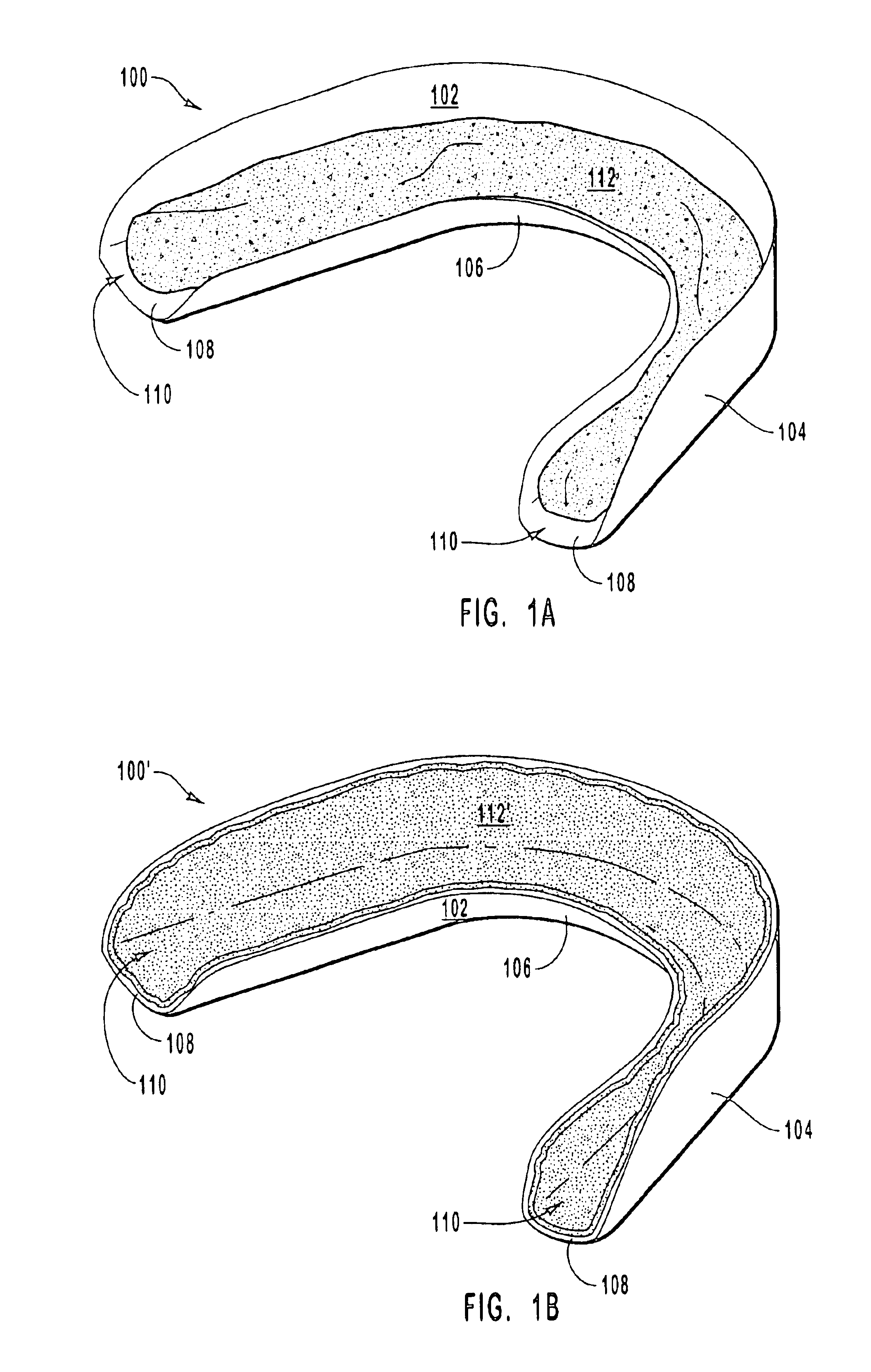Oral treatment devices that include a thin, flexible barrier layer and an endoskeleton treatment or adhesive composition
a barrier layer and endoskeleton technology, applied in the field of oral treatment devices, can solve the problems of significant portion of the bleaching composition not remaining on the teeth, on the bleaching composition, and being directly exposed to the saliva of the person,
- Summary
- Abstract
- Description
- Claims
- Application Information
AI Technical Summary
Benefits of technology
Problems solved by technology
Method used
Image
Examples
examples 1-21
are directed to the manufacture of dental bleaching gel compositions that are processed to yield substantially solid bleaching compositions, used to manufacture treatment devices according to the invention. Examples 22-26 are directed to the manufacture of dental desensitizing compositions that are processed to yield substantially solid desensitizing compositions used to manufacture treatment devices according to the invention. Examples 27-29 are directed to the manufacture of medicament compositions that are processed to yield substantially solid medicament compositions used to manufacture treatment devices according to the invention. Examples 30-37 are directed to the manufacture of auxiliary adhesive compositions that do not include any active agent. Examples 38-43 are directed to sticky, viscous dental bleaching gels that are suitable for use in manufacturing oral treatment devices according to the invention. Examples 44-49 describe further variations of exemplary compositions a...
example 1
A dental bleaching composition was formed by mixing together the following components:
Carbamide Peroxide16%Polyvinyl pyrrolidone (M.W. = 1.3 million)38%Water46%
The dental bleaching composition was spread in the form of a gel over flexible polymer sheets using a spatula and then heated in a forced air oven heated to a temperature of 50-70° C. for approximately 1 hour. The coated sheets were removed from the oven and inspected. The bleaching gel had dried sufficiently so as to form a substantially solid, coherent bleaching composition on the surface of the polymer sheets. The coated sheets were placed back into the oven overnight to remove additional water.
The coated sheets were removed from the oven a second time, cut apart into smaller-sized pieces, shaped into tray-like devices suitable for placement over a person's teeth.
example 2
A dental bleaching composition was formed by mixing together the following components:
Carbamide Peroxide16%PolyOx WSR 101 (M.W. = 1 million) 7%Water77%
The bleaching composition is used to manufacture dental bleaching devices according to the procedures described in Example 1.
PUM
 Login to View More
Login to View More Abstract
Description
Claims
Application Information
 Login to View More
Login to View More - R&D
- Intellectual Property
- Life Sciences
- Materials
- Tech Scout
- Unparalleled Data Quality
- Higher Quality Content
- 60% Fewer Hallucinations
Browse by: Latest US Patents, China's latest patents, Technical Efficacy Thesaurus, Application Domain, Technology Topic, Popular Technical Reports.
© 2025 PatSnap. All rights reserved.Legal|Privacy policy|Modern Slavery Act Transparency Statement|Sitemap|About US| Contact US: help@patsnap.com



